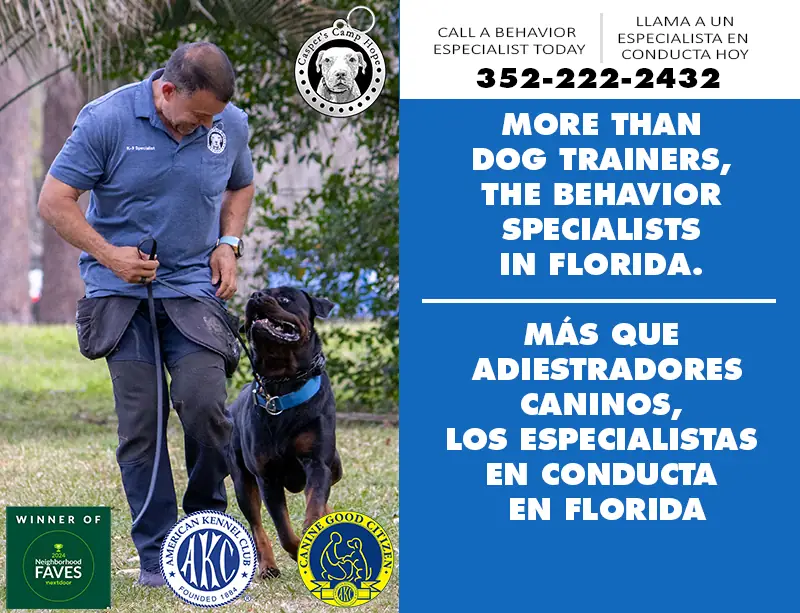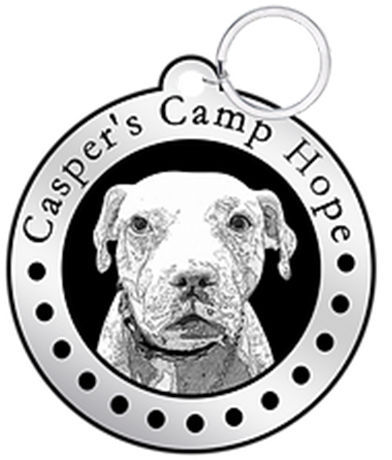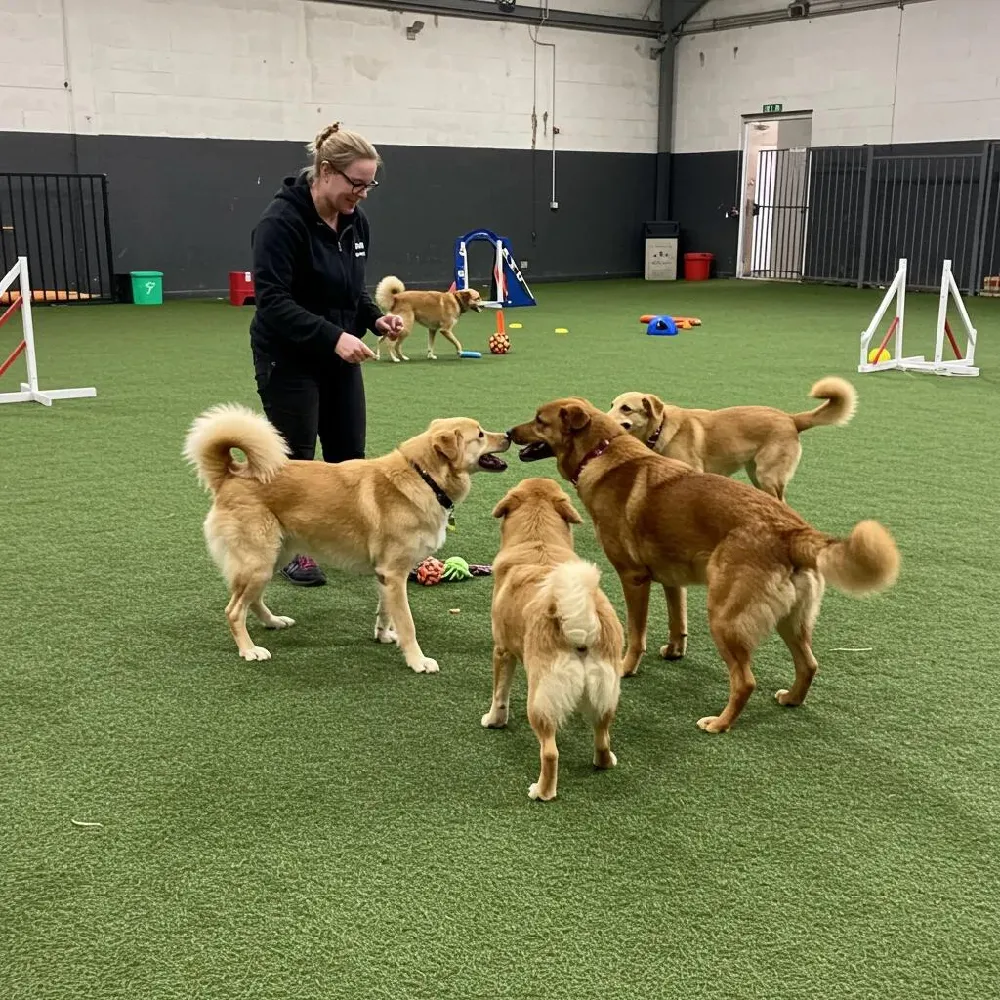
Integrating professional behavior training into local dog boarding services near me delivers structured care and accelerated learning for lasting obedience and confidence. By combining individualized board-and-train programs with expert reinforcement methods, pet owners address anxiety, aggression, and leash reactivity while their dogs enjoy safe socialization and routine. This article explains why boarding with behavior training outperforms standard kennels, details how board-and-train programs work, explores solutions for common behavioral issues, unveils Casper’s Camp Hope’s humane training philosophy, describes daily routines and facility features, guides your decision-making process, and offers direct answers to key concerns.
Why Choose Dog Boarding with Behavior Training Near Me?
Combining kennel care with structured behavior training creates a consistent environment that reinforces good habits and accelerates obedience improvements from day one. This approach integrates professional trainers into daily routines, ensuring commands, social cues, and impulse control are taught around feeding, play, and rest periods for maximum retention. Pet owners benefit from efficient learning curves, reduced stress during separation, and measurable progress reports—all delivered close to home.
What Are the Benefits of Combining Boarding and Behavior Training?
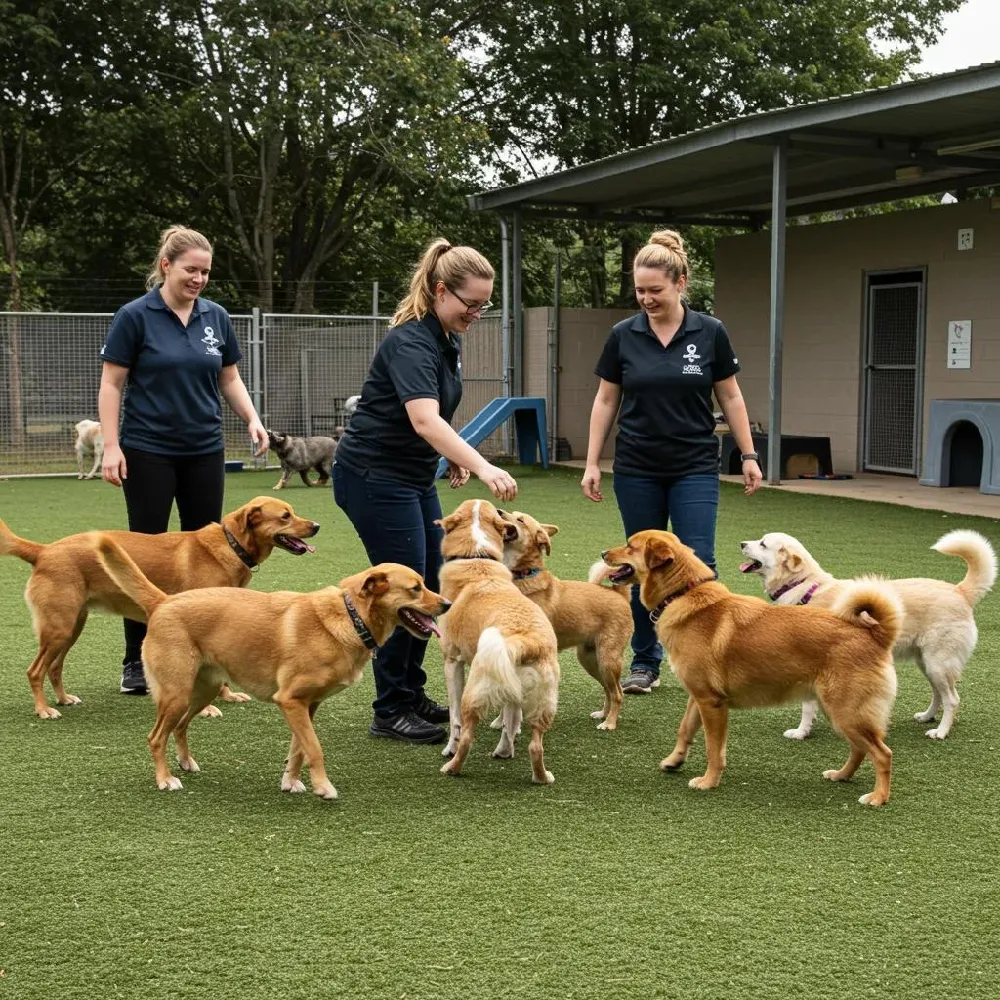
A board-and-train environment leverages immersion, consistency, and expert guidance to produce lasting behavior change rather than temporary fixes. Key advantages include:
- Accelerated Learning: Intensive sessions reinforce commands throughout the day for faster mastery.
- Reduced Owner Stress: Owners receive expert support during travel or busy schedules.
- Tailored Curriculum: Personalized plans address each dog’s temperament and skill gaps.
- Structured Socialization: Controlled interactions build confidence with other dogs and people.
- Accountability and Reporting: Regular updates ensure transparency on progress and next steps.
These benefits form a seamless bridge between professional training and everyday pet ownership, setting the stage for a smoother transition back home.
How Does a Structured Environment Accelerate Dog Behavior Improvement?
A consistent daily schedule establishes clear cause-and-effect relationships for dogs, so commands are associated with specific activities such as mealtime, playtime, and calm periods. Trainers guide each exercise in small increments, reinforcing success with treats, praise, and predictable routines. This structured immersion fosters neural pathways linked to impulse control and obedience far more effectively than sporadic lessons, paving the way to more reliable recall, improved leash manners, and reduced anxiety.
Which Behavioral Challenges Can Boarding with Training Address?
Immersive behavior modification in a boarding setting effectively tackles issues by combining professional oversight with targeted exercises. Common challenges include:
- Separation Anxiety: Desensitization protocols reduce distress when owners depart.
- Aggression: Controlled exposure and counterconditioning diminish leash reactivity and dog-to-dog aggression.
Research indicates that certain training methods can have a significant impact on aggression and fear, highlighting the importance of choosing appropriate techniques.
Dog Training Techniques: Impact on Aggression, Fear, and Owner Relationships
The current study examined relationships between operant conditioning derived dog training techniques and aggression, fear, and dog-owner relationship. Participants (N = 326) completed two online surveys; 1) a survey created for this study measuring the frequency of use of 14 common dog training techniques, which were grouped into four categories based upon operant conditioning: positive reinforcement, negative punishment, positive punishment, and negative reinforcement and 2) the Canine Behavioral Assessment and Research Questionnaire (C-BARQ), which measured several factors related to dog behavior. There were no statistically significant results related to the use of positive reinforcement or positive punishment. However, dog owners who reported frequent use of negative reinforcement also reported significantly higher scores for stranger-directed aggression, owner-directed aggression, dog-directed fear, and attachment/attention seeking. Additionally, owners who reporte
- Impulse Control: Obedience drills strengthen patience and self-restraint.
- Excessive Barking: Calm-alone time and positive reinforcement teach quiet cues.
This comprehensive approach ensures that unwanted behaviors are replaced with reliable commands and confidence.
How Does Socialization Support Behavior Modification During Boarding?
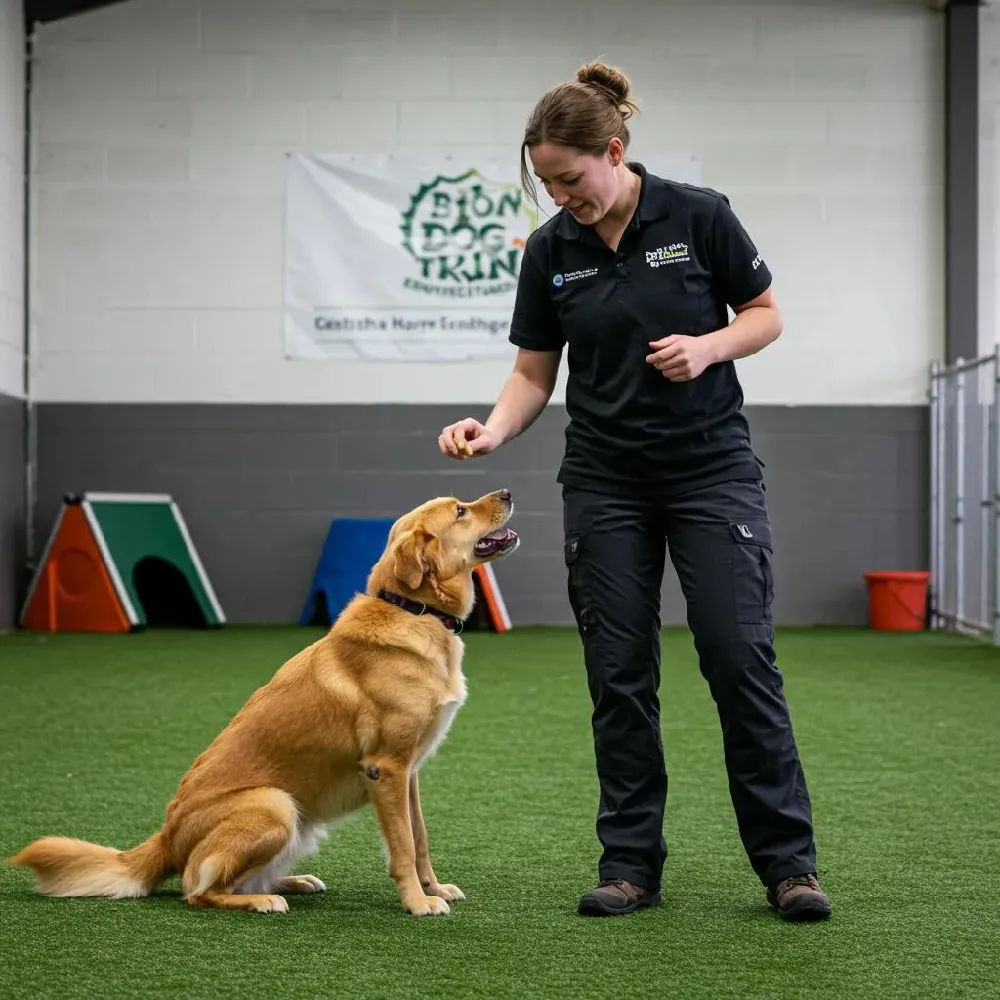
Socialization opportunities in a supervised setting help dogs generalize training cues across contexts, reducing fear responses and encouraging cooperative play. Trainers rotate small groups for monitored interactions, guiding polite greetings and reinforcing calm body language. As dogs learn to read canine signals and respond to handler direction in group settings, they carry these lessons into home life, leading to more balanced social behavior.
What Are Board and Train Dog Programs and How Do They Work?
A board and train dog program immerses pets in a residential facility where accredited trainers deliver daily lessons alongside boarding care, combining lodging with an intensive curriculum for obedience, socialization, and behavior modification. Dogs live on-site for a defined period, experiencing a phased program designed to build foundational skills, address specific issues, and reinforce positive traits before reintroduction to home life.
What Is Included in a Typical Board and Train Program?
A standard board and train program integrates lodging, nutrition, exercise, and structured lessons throughout each day. Core components include:
- Professional evaluation and individualized behavior plan
- Morning obedience session focusing on sit, down, and recall
- Supervised play to practice social cues
- Midday rest period with calming cues and crate training
- Leash manners instruction during afternoon walks
- Evening reinforcement of commands and impulse control
How Long Do Board and Train Programs Usually Last?
Most board and train stays range from two to five weeks, depending on the dog’s age, temperament, and behavioral goals. Shorter two-week programs focus on basic obedience and socialization, while month-long or longer stays address complex issues such as severe anxiety or aggression. Program length adapts to individual progress, allowing trainers to extend or graduate dogs as readiness milestones are achieved.
What Training Methods Are Used in Board and Train Programs?
Board and train programs emphasize humane, science-based strategies that support emotional well-being and optimal learning:
- Positive Reinforcement: Rewarding desired behaviors with treats, praise, and play to strengthen neural associations.
- Fear Free Protocols: Minimizing stress through gradual desensitization and low-stress handling techniques.
- Structured Clicker Training: Using marker signals to pinpoint precise behaviors for timely reinforcement.
- Counterconditioning: Pairing positive experiences with previously aversive stimuli to reshape emotional responses.
These methods ensure dogs learn willingly and retain skills long after they leave the facility.
How Do Puppy and Adult Dog Programs Differ?
| Program Aspect | Puppy Program Attribute | Adult Program Attribute |
|---|---|---|
| Socialization Focus | Controlled playdates and early cues | Advanced group manners and impulse work |
| Learning Pace | Shorter sessions for limited focus | Extended sessions for complex skills |
| Crate and House Training | Foundational crate exercises | Reinforcement of existing house habits |
| Command Complexity | Basic obedience (sit, stay, come) | Advanced cues (heel, down, long-distance recall) |
| Emotional Resilience | Gentle exposures to new stimuli | Counterconditioning for persistent fears |
How Does Behavior Modification Dog Boarding Solve Common Issues?
Behavior modification boarding applies consistent, evidence-based strategies within a secure facility to address ingrained behavioral concerns and teach alternative responses. By isolating triggers in a controlled manner, trainers guide dogs through systematic desensitization, positive associations, and obedience drills until unwanted behaviors are replaced with reliable, desirable actions.
How Is Separation Anxiety Treated During Boarding?
Separation anxiety treatment begins with a gradual departure routine where trainers step away for increasing intervals, rewarding calm behavior upon return. Paired with comforting scent items and counterconditioning exercises, dogs learn that alone time leads to positive outcomes rather than distress. Daily progress is tracked, and owners receive specific follow-up strategies to maintain gains at home.
What Strategies Are Used for Aggression Management in Boarding?
Aggression management relies on identifying triggers, creating desensitization hierarchies, and teaching alternative behaviors. Trainers schedule controlled meet-and-greets using safety barriers, gradually reducing distance as dogs demonstrate calm responses. Simultaneously, impulse-control exercises such as “sit-stay” under distraction conditions enforce self-restraint. Over time, aggressive outbursts diminish and polite engagement becomes the default.
How Does Obedience Training Boarding Improve Leash Manners and Barking?
Leash manners improve through incremental walking drills that reinforce loose-leash movement with voice cues and timely rewards for correct positioning. Barking is addressed by teaching a quiet command paired with redirecting behaviors such as chew toy engagement. Through repetition in varied contexts—during play, feeding, and crate times—dogs generalize calm behavior and reduce nuisance barking both on and off-site.
What Is Casper’s Camp Hope’s Training Philosophy?
Casper’s Camp Hope combines compassionate expertise with proven methods to deliver positive, humane, and effective behavior training throughout boarding stays. The philosophy centers on reinforcing cooperative behavior, minimizing stress responses, and educating pet owners to sustain improvements, ensuring dogs develop both skills and confidence for lifelong good conduct.
How Does Positive Reinforcement Enhance Dog Behavior Training?
Positive reinforcement enhances learning by rewarding dogs immediately when they perform desired actions, strengthening neural pathways that encode obedience. This method increases motivation, reduces fear-based responses, and promotes a willingness to learn new cues. For example, timely treats following a successful recall establish a clear connection between the command and reward, leading to more reliable responses over time.
What Is the Fear Free Approach to Dog Boarding and Training?
The Fear Free approach prioritizes emotional well-being by minimizing physical and psychological stressors. Techniques include gradual desensitization to novel environments, low-stress handling, abundant enrichment opportunities, and soothing vocal cues. By fostering a calm mindset, dogs learn more effectively and experience reduced cortisol levels, supporting both behavior change and overall welfare.
The use of enrichment toys has been shown to be an effective method for reducing stress in dogs during boarding situations.
Reducing Stress in Boarding Dogs with Enrichment Toys
AbstractStress is something felt by all creatures in many different situations. For dogs, stress can come about by being in an unknown environment, near unfamiliar people and other dogs. When dogs are stressed, they exhibit behaviors that can fall into four different categories: posture, vocalizations, activity, and aggression. This research was looking to see if the use of enrichment toys, meant to stimulate a dog’s mind, could be a useful tool in combating behaviors caused by stress. By allowing dogs at a boarding center to play with either enrichment or non-enrichment toys, and observing their behavior, then comparing the frequency of the behavior using a t-test, it could be determined if enrichment toys have an effect on behavioral signs of stress. 22 dogs were separated into two groups and allowed to play with toys from their assigned groups. After being returned to the kennels, dogs were obse
Who Are the Professional Trainers Behind Our Programs?
Our team consists of certified behaviorists and accredited trainers with credentials from the Association of Professional Dog Trainers and the Certification Council for Professional Dog Trainers. Each specialist brings years of hands-on experience, continuous education in modern methods, and a commitment to compassionate care. Their expertise ensures every dog receives individualized attention and scientifically grounded instruction.
What to Expect During Your Dog’s Stay at Our Boarding and Training Facility?
Board and train stays at Casper’s Camp Hope offer a predictable daily structure, specialized equipment, and transparent communication so owners feel confident in their dog’s progress. Dogs enjoy a blend of training sessions, social interactions, and quiet rest periods within climate-controlled kennels designed to reinforce lessons and ensure comfort.
What Is a Typical Day Like for Dogs in Our Board and Train Program?
| Time Slot | Activity | Training Focus |
|---|---|---|
| 7:00 AM | Morning walk and recall | Reinforce sit-come commands |
| 9:00 AM | Obedience session | Heel, down and impulse drills |
| 11:00 AM | Supervised playgroup | Socialization and cues |
| 1:00 PM | Rest and crate training | Calm reinforcements |
| 3:00 PM | Leash etiquette exercises | Loose-leash walking |
| 5:00 PM | Behavior modification drills | Desensitization tasks |
| 7:00 PM | Evening calm session | Quiet cue practice |
How Do We Communicate Progress to Pet Owners?
Owners receive daily journal entries that describe each training milestone, video clips of key exercises, and summary reports highlighting behavior improvements and next steps. Personalized coaching calls and virtual consultations reinforce owner involvement and prepare families for a smooth transition when dogs return home.
What Facility Features Support Behavior Training?
Our facility includes dedicated training zones, secure play yards, quiet retreat areas for anxious dogs, and specialized equipment such as elevated platforms and clicker stations. Climate control and individual kennel enrichment ensure dogs remain comfortable and receptive, reinforcing learning through consistency and positive environmental cues.
How Can I Choose the Best Dog Training Boarding Facility Near Me?
Selecting the ideal local dog boarding services combines research on curriculum quality, trainer credentials, and facility amenities with personal observation. Evaluating each program’s structure, safety measures, and behavior-focused offerings ensures you invest in lasting results rather than temporary fixes.
What Should I Look for in a Board and Train Program?
When comparing options, prioritize these attributes:
- Certified Trainers: Staff accredited by recognized organizations for behavior expertise.
- Customized Plans: Programs tailored to your dog’s age, temperament, and specific challenges.
- Structured Environment: Consistent daily routines and safe socialization opportunities.
- Positive-Based Methods: Humane reinforcement techniques and Fear Free protocols.
- Transparent Reporting: Regular updates, video evidence, and post-program coaching.
Focusing on these criteria helps you identify a facility committed to effective, science-backed training.
How Does Casper’s Camp Hope Compare to Other Dog Boarding Services?
| Feature | Casper’s Camp Hope | Typical Kennel or Trainer |
|---|---|---|
| Behavior-Focused Curriculum | Fully integrated board-and-train modules | Standard boarding or separate lessons only |
| Trainer Qualifications | Accredited behaviorists with continuous education | Varied credentials |
| Emotional Welfare Protocols | Fear Free and enrichment-based environments | Limited stress-management focus |
| Owner Engagement | Daily journals, videos and virtual coaching | Irregular updates |
| Facility Specialization | Dedicated training zones and retreat areas | General kennels |
What Are the Costs and Enrollment Process for Board and Train Programs?
Program fees vary based on duration and intensity but typically range from mid-level to premium investment tiers that include lodging, training, meals, and owner follow-up sessions. Enrollment involves an initial consultation to assess your dog’s needs, vaccination verification, scheduling, and detailed agreement outlining training goals. Flexible payment options and clear agreements ensure transparency and satisfaction.
What Are the Most Frequently Asked Questions About Dog Boarding with Training?
Is Dog Boarding Training Worth It for My Pet?
Yes, professional board-and-train programs deliver expertise, consistency, and immersion that fast-track obedience and reduce long-term stress for both dogs and owners. Investing in structured behavior training during boarding yields measurable improvements in socialization, impulse control, and overall confidence.
Can Boarding Help with Anxious or Reactive Dogs?
Yes, by exposing dogs to graded stimuli in a controlled setting and implementing counterconditioning exercises, boarding programs effectively reduce separation anxiety and leash reactivity while building emotional resilience through positive experiences.
How Do I Prepare My Dog for a Board and Train Stay?
Begin acclimating your dog with short overnight stays, review vaccination records, pack familiar bedding, and maintain consistent feeding schedules leading up to the program. A briefing session with trainers helps set clear goals and introduces your dog to the facility to ease first-day nerves.
What Follow-Up Support Is Available After Boarding?
Post-stay support includes personalized training guides, refresher lessons, and virtual check-ins to reinforce learned behaviors at home. Owners receive actionable plans and access to ongoing consultations, ensuring sustainable progress beyond the boarding period.
Dogs enrolled in a local board-and-train program with behavior training benefit from expert care and focused lessons, resulting in reliable commands and greater confidence. Casper’s Camp Hope’s integrated approach—grounded in positive reinforcement and Fear Free principles—offers customized curricula, transparent communication, and specialized facilities to foster lasting improvements. With certified trainers, structured routines, and comprehensive follow-up, pet owners gain peace of mind and dogs develop essential social and obedience skills. Explore board-and-train options to secure the best outcome for your dog’s behavior and well-being.
